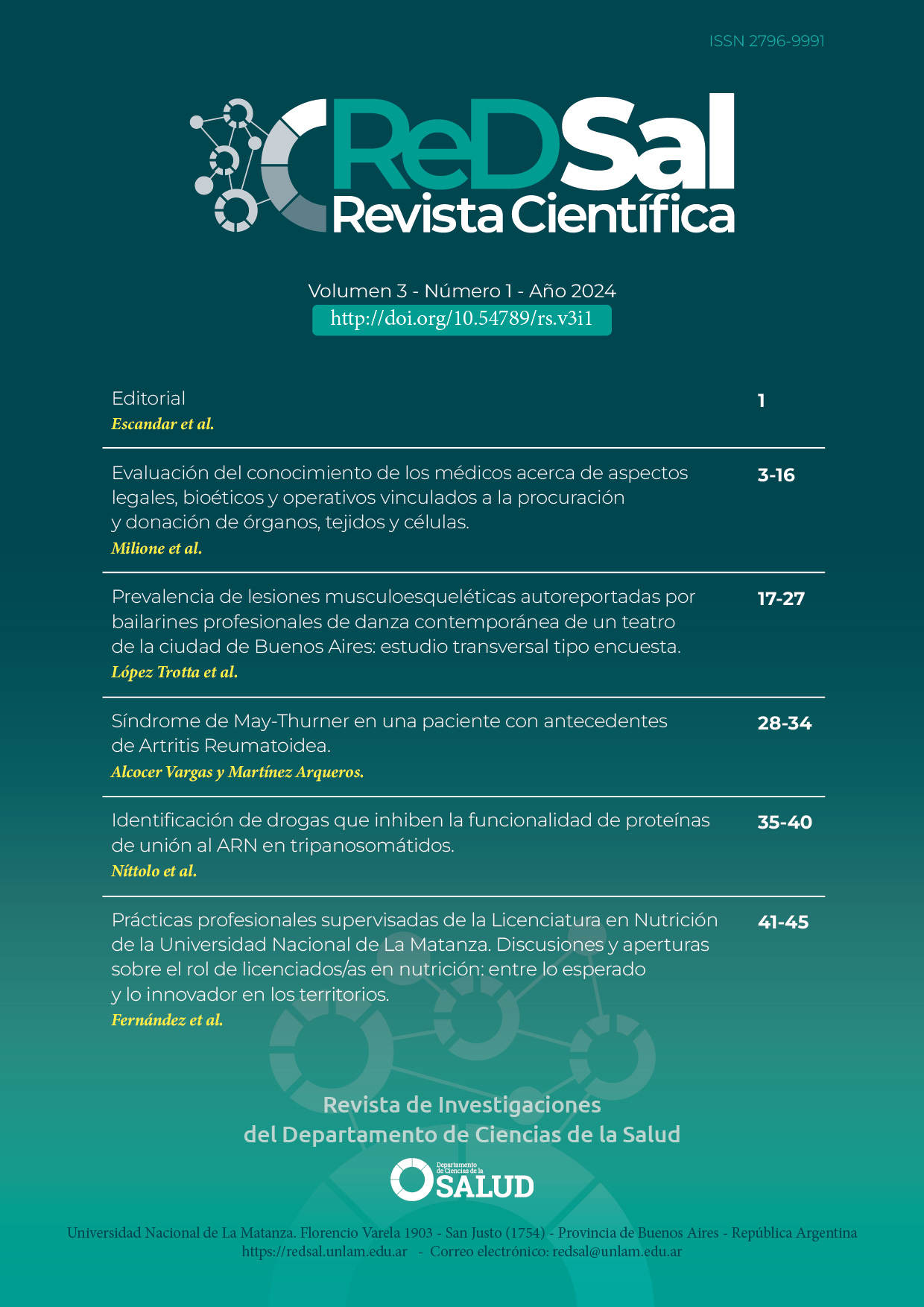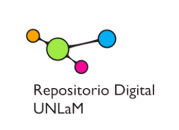Identification of drugs that inhibit the functionality of RNA-binding proteins in trypanosomatids
DOI:
https://doi.org/10.54789/rs.v3i1.32Keywords:
Trypanosoma cruzi, Trypanosoma brucei, RNA-binding proteins, drug repositioning, daunorubicin, inhibitory concentration 50Abstract
Trypanosoma cruzi and Trypanosoma brucei cause Chagas disease and African sleeping sickness, respectively. There are no vaccines and existing treatments are ineffective. The study of proteins relevant to the parasite represents promising therapeutic targets. Considering the RNA-binding protein TbRRM1 as a target, daunorubicin is proposed as a therapeutic compound, and its effectiveness in the survival of T. brucei is evaluated.
References
Schmunis GA. Epidemiology of Chagas disease in non-endemic countries: the role of international migration. Mem Inst Oswaldo Cruz. 2007;102 Suppl 1: 75–85.
Lander N, Chiurillo MA, Storey M, Vercesi AE, Docampo R. CRISPR/Cas9-mediated endogenous C-terminal Tagging of Trypanosoma cruzi Genes Reveals the Acidocalcisome Localization of the Inositol 1,4,5-Trisphosphate Receptor. J Biol Chem. 2016;291:25505–25515.
Website. Available: OPS/OMS. Encuentro Nacional de Chagas: Argentina actualiza estrategia para lograr la eliminación de la transmisión. 2019. Disponible en: https://www.paho.org/arg/index.php?option=com_content&view=article&id=10343:encuentro-nacional-de-chagas-argentina-actualiza-estrategia-para-lograr-la-eliminacion-de-la-transmision&Itemid=226
Brun R, Blum J. Human African trypanosomiasis. Infect Dis Clin North Am. 2012;26:261–273.
Steverding D. The development of drugs for treatment of sleeping sickness: a historical review. Parasit Vectors. 2010;3(1):15. doi: 10.1186/1756-3305-3-15
De Gaudenzi JG, Noé G, Campo VA, Frasch AC, Cassola A. Gene expression regulation in trypanosomatids. Docampo R, editor. Essays Biochem. 2011;51:31-46. doi: 10.1042/bse0510031
Clayton C, Shapira M. Post-transcriptional regulation of gene expression in trypanosomes and leishmanias. Mol Biochem Parasitol. 2007;156(2):93-101. doi:10.1016/j.molbiopara.2007.07.007
Stanne TM, Rudenko G. Active VSG Expression Sites in Trypanosoma brucei Are Depleted of Nucleosomes. Eukaryot Cell. enero de 2010;9(1):136-47.
Wirtz E, Leal S, Ochatt C, Cross GA. A tightly regulated inducible expression system for conditional gene knock-outs and dominant-negative genetics in Trypanosoma brucei. Mol Biochem Parasitol. 1999;99: 89–101.
Rolón M, Vega C, Escario JA, Gómez-Barrio A. Development of resazurin microtiter assay for drug sensibility testing of Trypanosoma cruzi epimastigotes. Parasitol Res. 2006;99: 103–107.

Downloads
Published
How to Cite
Issue
Section
License
Copyright (c) 2024 ReDSal

This work is licensed under a Creative Commons Attribution 4.0 International License.








